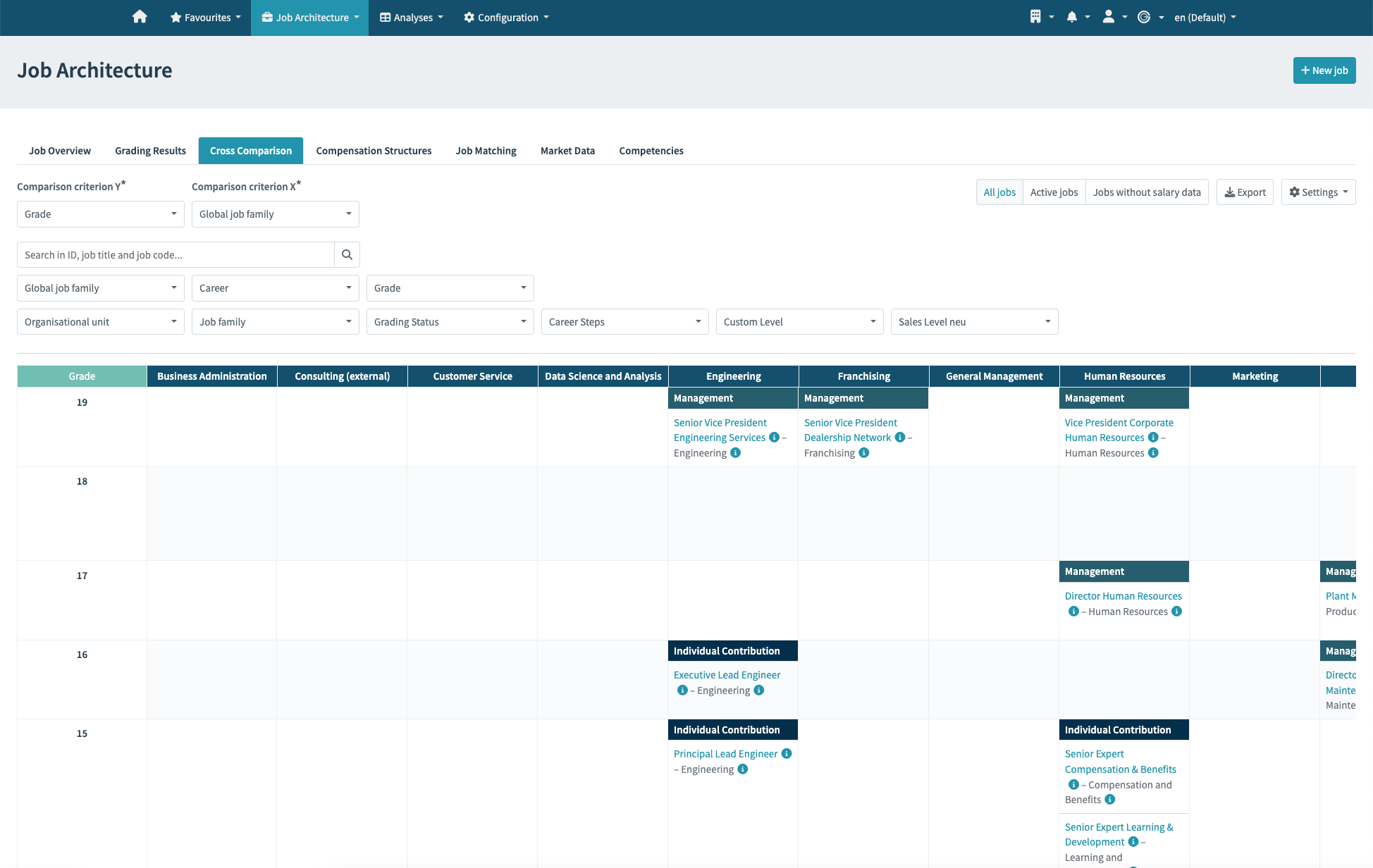Putting a price on work is a daunting task. And in an organisation with a complex web of roles, sorting jobs into an appropriate hierarchy can be even more difficult. After all, how do we decide the value of work?
With so many factors at play - skills needed, education required, responsibility taken and job conditions - pinning down a figure that ensures appropriate pay levels across the board takes more than intuition or guesswork.
Without an analytical and objective approach, organisations can run into real problems. In fact, inequitable pay and an unbalanced hierarchy can sow the seeds of employee dissatisfaction and resentment within even the best teams.
Then, there’s the even more critical issue of wage discrimination and the legal repercussions it brings. By law, organisations must not pay a employee less as a result of their gender, race, religion, disability, age or sexual orientation.
Not only is equal pay essential for promoting a fair society, but failing to ensure it could see an organisation in court with a hefty legal bill and their reputation in tatters.
The bottom line? A watertight job evaluation system is essential to attract and retain talent, maintain workplace harmony and avoid damaging legal battles.

So, What Is Job Evaluation?
Put simply, job evaluation is a systematic process intended to provide a rational, orderly hierarchy of jobs based on their worth to the company. It’s important to keep in mind that it’s a way of appraising the job roles themselves, not the individuals who do them.
Therefore, a job evaluation system seeks to objectively measure and quantify the relative complexity, degree of responsibility and degree of effort demanded by a job.
Why Is Job Evaluation Important?
These days, effective job evaluation is about much more than being able to defend your organisation if it gets hauled into an equal pay case.
Firstly, effective job evaluation establishes fair and transparent pay structures in an organisation. Because information about different roles is always evaluated in the same way and within established parameters, the decision making process is consistent.
Crucially, employees and managers know how decisions are made. This achieves transparency and reduces the likelihood of disputes around pay and hierarchy.
Secondly, building a solid, clearly mapped job architecture optimises talent management and succession planning. Factors that are determined for job evaluation can be taken into account while selecting the employees. Even better, when directors can see there’s no natural successor for a particular role, they can put plans in place to address the problem early.
Finally, job evaluation is key in creating an equitable wage structure. Addressing pay discrimination based on gender, sex, age or nationality is much more than a box-ticking exercise; it can enrich an organisation’s talent pool, attract top talent and build a positive company culture.
Thanks to laws in many countries across the globe, men and women in the same employment performing equal work must receive equal pay. So, how do we know when work is ‘equal’?
The truth is, objective, data-based job evaluation is the single most reliable way of assessing whether jobs are of equal value.
But it’s important to remember: these benefits of job evaluation can’t be tapped into without a rigorously analytical approach based on meaningful data. In fact, only some methods will stand in an equal pay claim. Which brings us to our next question…
Is All Job Evaluation Equal?
In short, absolutely not. In fact, there are two main approaches to job evaluation - non-analytical and analytical - and different methods within each category.
Paired ranking is a non-analytical form of job evaluation that sees a whole-job compared to other whole-jobs, without breaking the role down into smaller components or demands. From this comparison, an internal hierarchy is made that ranks job values from highest to lowest.
Unsurprisingly, job ranking is relatively uncommon these days; because there’s no scoring system to objectively justify the hierarchy, this method is inherently biassed and simply wouldn’t stand up in an equal pay trial.
Alternatively, point-factor based job analysis is a quantitative form of evaluation that breaks jobs into smaller components, using defined factors and levels within them. Job requirements are compared to the standardised definitions of the factor levels, with corresponding points assigned to the job based on the relevant level.
Once the total job score is calculated, it can be used to create a job hierarchy by using either the original points (job ranking) or a translation into a grade structure (job grading).
When it comes to effective job evaluation, consistency and objectivity are key. This is why point-factor methods are the most common forms of analytical job evaluation. It’s also why it’s the foundation of gradar’s progressive job evaluation system.
How Is gradar Changing The Game?
In recent years, the consulting industry has made the job evaluation process increasingly cryptic and complex. In fact, they almost always use proprietary systems that require the ‘secret knowledge’ of their specialised staff.
But, the truth is, there’s no reason why organisations shouldn’t be able to deliver systematic, highly consistent job evaluation in-house. This is the principle that sparked gradar’s mission to create an accessible, affordable and transparent job evaluation system for all businesses.
Considering wider factors such as professional knowledge, specific responsibilities and interpersonal skills, gradar offers a deeply analytical and highly objective approach to job evaluation.
Our system not only determines the internal relativities in an organisation using a point-factor-based approach, but it offers progressive features such as pay gap analysis and the ability to translate results into job codes from multiple salary surveys, aligning with labour agreements.
The result is a software that lets all organisations tap into the benefits of effective job evaluation and take ownership of their HR practices.
If it sounds like gradar could help your business, get in touch with our support team today.
would you like to know more?
register now for our free evaluation version and try gradar for free!



